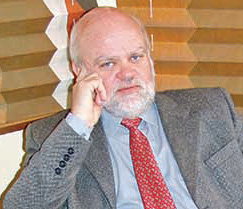
Innovation – Open Innovation – Part 1
Background
I have covered the total innovation process from defining the challenge, generating ideas and through to commercialisation. The focus of the innovation process in these articles was on corporate innovation, where the assumption was that the organisation defines its own challenges and generates its own solutions. However, an organisation can expand the pool of brains thinking about a business problem. It is called open innovation, and it is a concept that has gained significant and recent traction.
Open Innovation
The term open innovation was popularised by Henry Chesbrough in his book Open Innovation: The New Imperative for Creating and Profiting from Technology. He wrote: “Open innovation is a paradigm that assumes that firms can and should use external ideas as well as internal ideas, and internal and external paths to market, as the firms look to advance their technology”.
Basically, the theory behind open innovation is that the sphere of knowledge and experience within the organisation is necessarily limited. Worse, it may be further limited by corporate practices and processes. As people become used to working in certain ways and thinking in certain ways at work, they find it increasingly difficult to break out of these moulds and adopt new ways of doing things.
By tapping into external sources, you expand your knowledge base, bring in new ways of thinking and new ways of doing things. It is widely known that diverse teams are more creative than teams in which all people come from similar backgrounds. Clearly, then, adding further diversity to internal teams can only improve the creativity and hence the innovation potential of that team and hence the organisation.
To explain how open innovation works in practice, let me give you some concrete examples of how some organisations have applied open innovation with great success.
Lego (the colorful interlocking plastic bricks) has an online open innovation platform that lets members of the public submit product ideas, which if they come to market will net them a percentage of the sales royalties. Users can create a page outlining their new concept and then share it with others to see what they think. Once the project has received 10,000 supporters it is reviewed by the Lego team to see if it meets the company’s standards for playability and safety and that it supports the Lego brand.
Featuring the slogan ‘You like it, we make it’ the Citroen car company collaborated with Facebook on an app that let the public have their say on a special edition of one of its popular vehicles. The app was launched in April 2012 and Citroen urged the 81,000 members of its Facebook community to participate. They were asked to determine the model’s look, equipment and details from a range of possibilities. This included options for the number of doors, interior and exterior colors, and communications equipment such as the Sat Nav system. This virtual ‘factory floor’ was open for just one month. Many responded to the open innovation initiative submitting a total of approximately 24,000 configurations.
International express shipping provider DHL faces a number of challenges every day as it seeks to optimize its logistics and transport activities in urban areas. To help it stay on top of its game DHL launched an open innovation contest in October 2011 for ideas to help the company reduce traffic bottlenecks and congestion, promote ‘green’ urban living and deliver efficient transport solutions.
I am of opinion that open innovation is a powerful innovation tool, but it is not the innovation silver bullet. As with any tool, you have to apply it in the right manner for the right job to be useful.
Next Time
Open innovation is a powerful ally in an organisation’s quest to stay competitive and enlighten customers. However, it is a fairly new concept and there are challenges and risks involved in utilising open innovation, which I will discuss in the next article. I conclude with some food for thought from the legendary Steve Jobs: “You can’t just ask customers what they want and then try to give that to them. By the time you get it built, they’ll want something new”.











































